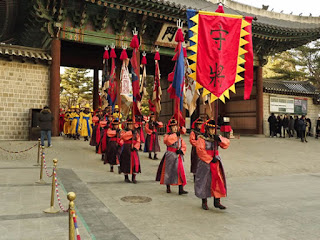22 Kasım 2020 Pazar
3 Kasım 2020 Salı
Ohnesorge: A Hurstian View on Chinese Econonomic Development
John K.M. Ohnesorge, University of Wisconsin Law School, has posted Development is Not a Dinner Party: A Hurstian Perspective on Law and Growth in China, which is forthcoming in the Wisconsin Law Review Forward:
Much has been written, and remains to be written, about the many roles law has played in China’s economic development since 1978. Without minimizing the value of what has been written so far, this essay seeks to broaden the discussion by applying to China’s recent history certain ideas of the great historian of 19th Century American law and economic development, James Willard Hurst. The essay proceeds by providing a brief introduction to Hurst and his work on law and economic growth in the United States, then explores how those ideas might be applied to assist our understanding of what has happened in China.
--Dan Ernst
8 Ekim 2020 Perşembe
Zhu on China Suzerainty over Tibet and Mongolia
Yuan Yi Zhu, Stipendiary Lecturer in Politics at Pembroke College, Oxford, has published Suzerainty, Semi-Sovereignty, and International Legal Hierarchies on China's Borderlands, in the Asian Journal of International Law:
The concept of semi-sovereignty, a now obsolete category of international entities possessing limited sovereignty, remains hazily understood. However, the historical examination of how semi-sovereignty was defined and practised during the long nineteenth century can provide insights on the interplay between authority and control within the hierarchies of international relations. This paper examines one specific type of semi-sovereignty—namely, suzerainty—which is often used to describe China's traditional authority in Tibet and Mongolia. By examining the events that led to the acceptance of suzerainty as the legal framing for the China-Tibet and China-Mongolia relationships, I argue that suzerainty was a deliberately vague concept that could be used to create liminal international legal spaces to the advantage of Western states, and to mediate between competing claims of political authority. Finally, I point to the importance of semi-sovereignty as an arena of legal contestation between the Western and non-Western members of the “Family of Nations”.
Update: With the new link above, the article is ungated.
27 Eylül 2020 Pazar
Du on filiality and falsity in Qing China
Last year, Yue Du (Cornell University) published "Policies and Counterstrategies: State-Sponsored Filiality and False Accusation in Qing China" in the International Journal of Asian Studies 16 (2019), 79-97. Here's the abstract:
Using court cases culled from various national and local archives in China, this article examines two strategies widely employed by Qing litigants to manipulate state-sponsored filiality to advance their perceived interests in court: “instrumental filicide to lodge a false accusation” and “false accusation of unfiliality.” While Qing subjects were willing and able to exploit the legalized inequality between parent and child for profit-seeking purposes, the Qing imperial state tolerated such maneuvering so as to co-opt local negotiations to reinforce orthodox notions of the parent–child hierarchy in its subjects’ everyday lives. Local actors, who appealed to the Qing legal promotion of parental dominance and filial obedience to empower themselves, were recruited into the Qing state's project of moral penetration and social control, with law functioning as a conduit and instrument that gave the design of “ruling the empire through the principle of filial piety” a concrete legal form in imperial governance.
Further information is available here.
--Mitra Sharafi
13 Eylül 2020 Pazar
Ho on Administrative Law in Tang Dynasty China
[We have the following announcement from the Chinese University of Hong Kong. DRE]
Greater China Legal History Seminar Series: Feeding the Emperor – Administrative Law in Tang Dynasty China by Prof. Norman P. Ho (Online)
The Tang Liu Dian (hereafter, “TLD”), compiled in 738–739 A.D. during the Tang dynasty, is an important administrative law code which lists out in great detail every Tang dynasty government office, as well as various official positions and their functions and obligations. The TLD is of great historical significance—it is regarded as the earliest fully extant administrative law code from China, and it served as a model administrative law code for subsequent dynasties, including the Ming and Qing dynasties. This seminar will examine Tang dynasty administrative law, as set forth in the TLD, through the specific lens of how the emperor was fed and will analyze Tang administrative regulations on feeding the emperor. This seminar will describe the specific agencies and officials who were responsible for feeding the emperor, as well as their specific functions and structures as provided by the TLD. Relevant rules in the Tang Code ?? (i.e., the Tang dynasty penal code) will also be discussed to provide a complete picture of the regulatory apparatus behind the task of feeding the emperor. Ultimately, from this examination of Tang administrative law through the emperor’s food service agencies and offices as set forth in the TLD, this seminar will also set forth some general observations regarding Tang dynasty administrative law and will argue that one of the key roles of administrative law in the Tang was to further enhance and protect the prestige, image, and power of the emperor.
Prof. Norman P. Ho is a Professor of Law at the Peking University School of Transnational Law (STL) in Shenzhen, PRC. His research interests broadly are in legal theory and legal history, and he writes specifically in the areas of premodern Chinese legal history and legal theory, comparative jurisprudence, property theory, and Asian-American jurisprudence. He has served as a visiting professor at the National University of Singapore Faculty of Law and a visiting fellow in the Center for Chinese Law (HKU Faculty of Law). Prior to joining the STL faculty, Norman practiced in the Hong Kong offices of Morrison & Foerster and Slaughter and May, where his practice focused on capital markets and private equity transactions. He received his J.D. degree from NYU School of Law and his undergraduate and graduate degrees in Chinese history from Harvard University.
CPD credits are available upon application and subject to accreditation by the Law Society of Hong Kong (currently pending).
Register here by 5pm, 17 September 2020 to attend the seminar.
6 Mart 2018 Salı
Boxer uprising
With much social unrest in China, the Boxers, as the movement’s adherents came to be known, found ready acceptance. A division within China’s royal dynasty further aided the growth of the movement.
Its objective was the removal of foreign influence over Chinese trade, politics, religion and technology. Brief but intense it stands as a significant episode of anti-imperialist fervor at a time when the United States was just beginning to involve itself to a greater degree in international affairs an create its own empire.
In response to spreading Boxer predations, Western nations began to build up their forces on the Chinese coast in April 1900.
In May 1900, Boxers move across the countryside, destroying railroads, dismantling telegraph lines, and murdering Christian missionary including some Americans, as well as their Chinese converts, whom the Boxers detested as much as the “foreign devils.”
In June, after the Japanese legation’s chancellor and the German minister were murdered by an angry mob, Boxers laid siege to the foreign embassies in the city of Peking. On 4 August a second, heavily reinforce column reinforced Tianjin in relief of the embassies, defeating Chinese forces in two battles on 4 an 5 August.
Boxer uprising
31 Temmuz 2017 Pazartesi
Vintage China
3 Şubat 2016 Çarşamba
Arrow War (1856-1860)
Although China was forced to concede many of its territorial and sovereign rights in the years following the First Opium War, the Western imperial powers also had to face rising anti-foreign sentiment, as many Chinese believed that uncultured barbarians should be excluded from the Middle Kingdom.
In this tense atmosphere in Guangzhou, Chinese policemen boarded the Arrow, a Chinese ship registered in Hong Kong under a British flag on October 8, 1856, and arrested 12 crewmen. The police accused suspected the crewmen of piracy and smuggling.
In the effort to arrest the crew members, the British flag, flown by the vessel because it was registered in Hong Kong, was torn.
Eager to gain more trading rights, the British used the incident to launch another offensive, precipitating the Second Opium War. The incident was immediately seized upon by Harry Parkes, the British consul in Guangzhou who wanted to legalize the opium and expand trade in China yet was frustrated by Cantonese opposition.
Parkes demanded that the Qing dynasty release the Arrow’s crew and apologize for the insult to the British flag. When Ye Mingchen, the viceroy of Liangguang released the Chinese crewmen but refused to apologize, Parkes had a fleet bombard Guangzhou.
The Chinese responded by burning foreign-owned factories and businesses in Canton. Meanwhile, a French priest was murdered in Canton.
Britain, joined by France, launched two punitive expeditions. The British parliament sent an expedition under James Bruce, the Earl of Elgin, to defend its honor. Meanwhile, France also dispatched it fleet under Baron Gros to China.
The Anglo-French force fought its way to Guangzhou and captured Ye Mingchen by the end of 1857.
Beijing was occupied in 1860, forcing the Imperial Court to stop resistance. The Arrow War ended with the acceptance and ratification of the Convention of Peking by the emperor in 1860. Under the terms of the Convention of Peking, China ceded Kowloon peninsula to the British in Hong Kong. The opium trade continued uninterrupted.
Arrow War (1856-1860)
14 Aralık 2015 Pazartesi
War of Kaifeng (1232 – 1233)
Kaifeng had been in a state of shock as the Mongols approached, because their arrival was preceded by the bad news of Jin defeats in the northern mountains where the soldiers were in snow up to their knees.
To raise the morale in Kaifeng the emperor deliberately made himself highly visible to his troops by touring the walls as the Mongol bombardment began.
When the Southern Song sent General Meng Hong to aid the Mongols, Emperor Ai Zong escaped along the Yellow River.
The Jin emperor continued resistance in the provinces but was defeated by Mongol and Song forces at Caizhou in 1234.
The Song were granted some ex-Jin territories as a reward but were dissatisfied and attacked Kaifeng and Loyang.
They were driven out but Ogedei resolved to conquer the Song Empire.
War of Kaifeng (1232 – 1233)
6 Temmuz 2015 Pazartesi
Opium War, First (1839-1842)
The Opium Wars began when the Chinese government tried to stop the illegal importation of opium by British merchants.
The First Opium War was sparked off by the detention of a number of (mostly British) traders and the confiscation of more than 20,000 cases of opium at warehouses in Guangzhou in March 1839. In July 1839 a group of drunken British and American sailors killed a Chinese civilian at Kowloon. The Chinese demanded the British surrender the murderer, but British First Superintendent of Trade Charles Elliot refused to do so.
In this power struggle the Chinese forced all British merchant ships to retreat from Macao to Hong Kong. British merchant ships attempt to land at Kowloon for supplies four days later and were attacked by Chinese warships.
British responded by sending an expedition of warships to the city in 1840. The British fleet of some 16 warships, including four steam powered gunboats, which represented a revolution in military affairs in Asian waters retaliated by shelling Guangzhou and seized an area of coast around the village of Hong Kong to settle merchants expelled both from Guangzhou and Macao.
The British took Xiamen and Ningbo. Meanwhile in 1842 land reinforcements from the Indian Army were put to work seizing control of key access points on China’s Grand Canal. The British won a quick victory.
The First Opium War ended with the signing of the Treaty of Nanking in 1842. By this treaty, and a supplementary one signed 1843, China was forced to pay a large indemnity, open five ports to British trade and residence, and cede Hong Kong to Great Britain.
The Second Opium War (or Arrow war) followed the detention of a British registered boat in 1856 and charged its crew with smuggling.
Eager to gain more trading rights, the British used the incident to launch another offensive, precipitating the Second Opium War. British forces aiding by the French, won another quick military victory in 1857.
The war ended with the signing of the Treaty of Tientsin in 1860, following an advance on Beijing by a British military expedition.
Opium War, First (1839-1842)
11 Nisan 2012 Çarşamba
Anyang
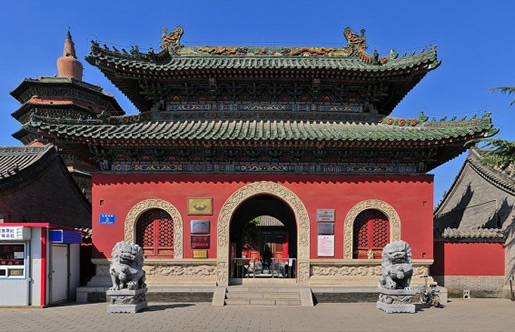 |
| Anyang |
Anyang is the modern town where the last capital (Yin) of the Shang dynasty (c. 1766–c. 1122 b.c.e.) of China was located. The discovery of inscribed oracle bones there early in the 20th century and the scientific excavation of the site beginning in 1928 ended the debate on whether the Shang dynasty was historic.
It is located south of the Yellow River in present-day Henan Province. The Shang dynasty, founded by Tang (T’ang) the Successful moved its capital several times until it settled at Yin in 1395 b.c.e. and remained there until its end in 1122 b.c.e.
The last phase of the dynasty is therefore also called the Yin dynasty. After the city was destroyed when the dynasty was overthrown by the Zhou dynasty (c. 1122–256 b.c.e.), the site was known as Yinshu, which means the “waste of Yin.”
  |
The discovery of the Shang era ruins at Anyang came by accident. In Beijing (Peking) in 1900 an antiquarian scholar became ill, and among the ingredients for traditional medicine that were prescribed for him were fragments of old bones carrying incised marks. The apothecary called them dragon bones.
This scholar and his friend made inquiries on the bones’ origins and traced them to Anyang, where farmers had found them in their diggings. They began to collect the bones and decipher the writings on them, which they established as the earliest extant examples of written Chinese.
Archaeological excavations around Anyang found the foundations of palatial and other buildings but no city walls. They also found a royal cemetery with 11 large tombs, believed to belong to kings, which had all been robbed in centuries past.
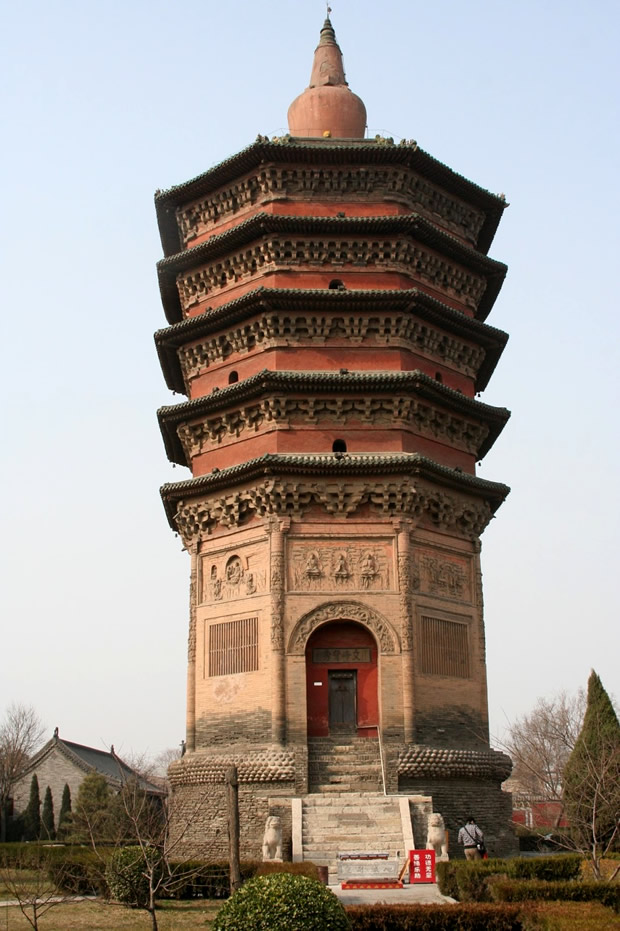 |
| Wenfeng pagoda, Anyang, China |
This authenticates ancient texts that identify 12 kings who ruled from Yin, but the last one died in his burning palace and so did not receive a royal burial. In 1976 an intact tomb belonging to Fu Hao (Lady Hao), wife of King Wuding (Wu-ting), the powerful fourth king to reign from Yin, was discovered.
Although her body and the coffin had been destroyed by time and water, more than 1,600 burial objects were found, some with inscribed writing, which included her name, on elaborate bronze ritual vessels. Bronze vessels, jade, ivory, and stone carvings, and other objects show the advanced material culture of the late Shang era.
More than 20,000 pieces of inscribed oracle bones (on the scapulae of cattle and turtle shells) provide important information on Shang history. Kings frequently asked questions and sought answers from the high god Shangdi (Shang-ti) on matters such as war and peace, agriculture, weather, hunting, pregnancies of the queens, and the meaning of natural phenomena.
   |
The questions, answers, and sometimes outcome contain dates, names of the rulers, and their relationship to previous rulers, including those of the pre-Anyang era. They were preserved in royal archives.
The writing is already sophisticated and must have developed over a long period, but earlier evidence of writing has not been found. It is the ancestor of modern written Chinese and deciphering the characters and information provided from archaeological evidence has enabled historians to reconstruct Shang history.
8 Nisan 2012 Pazar
Ban Biao
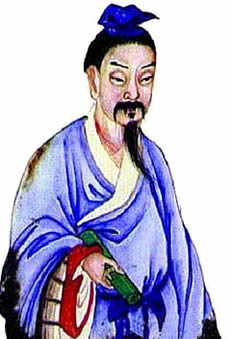 |
| Ban Biao |
Ban Biao, the father, began writing a monumental history titled the Hanshu (Hanshu), Book of Han or History of the Former Han Dynasty.
It was commissioned and produced under court patronage and was the first historical work devoted to a dynasty (the Western Han, 202 b.c.e.–23 c.e.). Although Ban Biao died long before its completion, his essay on sovereignty, which was included in the work, became a basic document on political ideas.
However, most of the 100 chapters (divided into 10 volumes) of this work belonged to his son Ban Gu (Pan Ku, 32–92 c.e.). His younger sister Ban Zhao (Pan Ch’ao, c. 48–116 c.e.) finished the history. She was the outstanding female intellectual in early imperial China.
The classic historical work followed the organizational pattern set by the first great Chinese historian, Sima Qian (Ssu-ma Ch’ien), who wrote the Shiji (Shihchi), or Records of the Historian, but applied to events of a single dynastic period.
Its 100 chapters were organized into separate sections consisting of 12 chapters of basic annals, eight of chronological tables, 10 of treatises, and 70 of biographies and bibliography. Although critics think the prose style of this work is drier and less elegant than Sima Qian’s work, subsequent historians have admired the two and have aspired to follow their examples.
Ban Zhao was educated at home, married, had children, and was widowed young. In addition to completing her father and brother’s unfinished history, she was often summoned to the palace by the emperor to lecture to the empress and ladies of the court. She lectured on classical writings, history, astronomy, and mathematics.
She became adviser to the empress regent and was so influential that the empress fired her own powerful brother on the basis of Ban Zhao’s memorial indicting him. The same empress regent was so saddened by Ban Zhao’s death that she ordered the court into mourning.
Ban Zhao wrote poetry, edited, and added to a first-century c.e. work titled Biographies of Eminent Women and a short book of seven chapters titled Lessons for Women on proper behavior for ladies that was intended for her young daughters but became widely read and circulated during her lifetime and later. She was the first thinker to formulate a complete statement on feminine ethics and the idea of relative ethics.
Significantly, she advocated giving girls an education up to the age of 15 to ensure intellectual compatibility between husbands and wives. After her death her daughter-in-law compiled and published her collected writing, some, including poetry and memorials, have survived.
The fourth member of this distinguished family was Ban Chao (Pan Ch’ao, 32–102 c.e.), who was the twin brother of Ban Gu. A man of action who distinguished himself as a young officer, Ban Chao was a key general who established Chinese supremacy in modern Chinese Turkestan across to Central Asia.
In 92 c.e. he was appointed protector-general of the Western Regions (the Chinese name for Central Asia). As both general and diplomat he supervised affairs and protected Chinese interests in the oasis states and guarded commerce along the Silk Road for three decades.
In 97 c.e. he led an army all the way to the Caspian Sea and sent forward units further west that reached either the Black Sea or the Persian Gulf before turning back. In the same year he also sent an officer under his command to proceed to Da Qin (Ta Ch’in), the Chinese name for the Roman Empire.
But the mission was intercepted in Parthia (modern Iran) and forbidden to proceed further. Parthia lay along the Silk Road between China and Rome and benefited from trade between the two empires. It naturally wanted to thwart any direct relations between China and Rome. As the author of the Hou Hanshu (Hou Han-shu), or History of the Later Han Dynasty, wrote:
“During the Han period, however, Chang Ch’ien ... and Pan Ch’ao ... eventually succeeded in carrying out expansion to the far west and in bringing foreign territories into submission. Overawed by military strength and attracted by wealth, none [of the rulers of the states of the Western Regions presented] strange local products as tribute and his loved sons as hostages ... Therefore ... the command of the protector-general was established to exercise general authority. Those who were submissive from the very beginning received money and official seals as imperial gifts, but those who surrendered later were taken to the capital to receive punishment. Agricultural garrisons were set up in fertile fields and post stations built along the main highways. Messengers and interpreters traveled without cessation, and barbarian merchants and peddlers came to the border for trade everyday.”
After three decades of service in Central Asia, for which he had been elevated to the rank of marquis, the aged general asked to retire and returned to the capital city, Luoyang (Loyang), where he died a month later.
7 Nisan 2012 Cumartesi
Buddhism in China
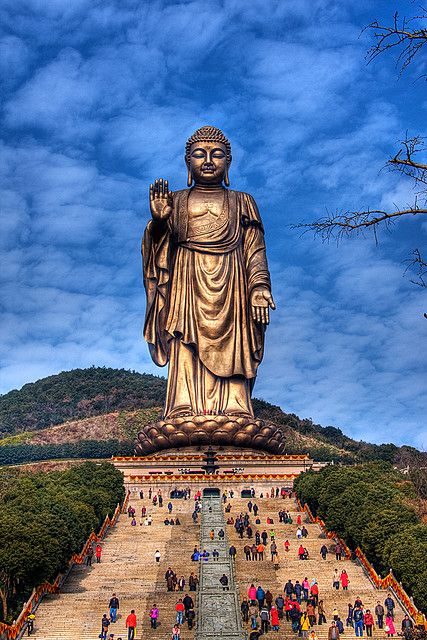 |
| Buddhism in China |
The practice of Buddhism spread in the centuries after the death of Gautama Buddha through the actions of pilgrims, wandering evangelists, and strong believers who wished to spread the faith to remote lands and also through observation of Buddhist practices by those who traveled overseas from India and Sri Lanka.
The various routes that composed the Silk Road were important conduits for Buddhism making its way into China, more so than the maritime routes that were more influential in the transmission of the belief into Southeast Asia.
Buddhism was recorded as being present in China from the time of the Han dynasty, and according to legend, the emperor Mingdi (Ming-ti , 57–75 c.e.) received a divine vision that inspired him to seek out knowledge of the Buddha from India.
Chinese monks and scholars were dispatched at regular intervals to seek out Indian knowledge and texts that could be brought back to China and translated into the Chinese language. In nearly every case, when Buddhist concepts were introduced to China they were combined with preexisting Chinese religious concepts or else were subsequently modified.
Notably, Buddhism was combined with the Daoist (Taoist) philosophy of Laozi (Lao Tzu), both to show respect to the latter and also to make the new, foreign concepts more intelligible to a Chinese audience.
The sheer size and degree of diversity within China meant that variations in interpretation inevitably occurred. Since most Chinese Buddhists had little knowledge of Pali or Sanskrit, the rituals in which all monks recited in unison the accepted Buddhist canon had less effect than it did in India.
At times Buddhism was suppressed as a foreign religion that was interfering with native Chinese beliefs. Forced underground during such periods, the rate at which variations in philosophy developed accelerated because of difficulties in communicating with other communities of believers. A number of different schools of Buddhist thought have consequently emerged in China.
Tiantai
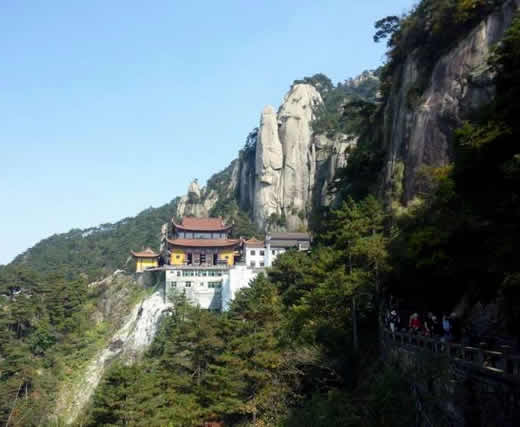 |
| Mount Tiantai |
Tiantai Buddhism was founded on Mount Tiantai in southeastern China by the monk Chiyi (Chih-I, 538–597 c.e.), during the Sui dynasty. It focused on the Lotus Sutra (Saddharmapundarika-sutra, or Fahua-ching in Chinese) as its central text. The Tiantai school taught that existence was real but impermanent and insubstantial and the need to adhere to the middle path in the search for personal enlightenment.
Chiyi’s belief was that Sakyamuni knew the entire canon of Buddhist thought at the time of his enlightenment, but it has only subsequently been released into human awareness because of the inability of people to comprehend the entirety of the message. Tiantai Buddhism was introduced into Japan at the beginning of the ninth century under the name Tendai by the monk Saicho.
Huayan
The Avatamsaka school of Buddhist thought is known as Huayan in China and Kegon in Japan. It is based on the Avatamsaka-sutra, which is also known as the Garland Sutra or Wreath Sutra.
Huayan Buddhism is associated with the monk Fazang (Fa-tsang, 643–712 c.e.), also known as Xianshou (Hsien-shou), the third patriarch who did much to develop the lessons of the school. The basis of Huayan Buddhism is that all elements of reality depend on each other and arise because of each other, spontaneously.
   |
At every moment an infinite number of possibilities exist, and it is possible, therefore, for an infinite number of Buddhas (who can internalize all of the possible variations within a harmonious whole) to emerge into the world. Advanced training of the mind and meditation are necessary to be able to comprehend the nature of reality and of how to strive for enlightenment.
Fazang was born into a Sogdian family from Chang’an (Ch’ang-an), and the system he established is often regarded as one of the most advanced and complete of all the schools of Buddhism to be created in China. It continues to be influential in Japan even in the modern age.
In China itself the Huayan form lost popularity as a result of the general suppression of Buddhism during the later Tang (T’ang) dynasty. It reemerged in part in the fostering of Neo-Confucianism, which flourished from the 11th century c.e.
Pure Land
The Pure Land form of Buddhism, known in Chinese as Qingtu (Ching-tu), is based on the Pure Land Sutra (Sukhavativyuha-sutra), which was created in the north of India in the second century c.e.
The sutra concerns the process of a monk who sought enlightenment by, in part, vowing to create a pure land in which all could live happily to a long and fulfilled age. Those who practice Pure Land Buddhism commit themselves to various vows that are believed to help them achieve enlightenment.
The 18th vow in particular is significant and holds that pronouncing the name of the Buddha at the point of death is sufficient to ensure that the soul will be reborn in the Pure Land. This form of Buddhism became very popular, largely because it offered the opportunity for ordinary people to aspire to enlightenment within their own lifetime.
The belief is that the monk in the Pure Land Sutra, whose name was Dharmakara, did achieve enlightenment and now resides in the Pure Land in the form of the Buddha Amitabha, or, in Chinese, O-mi-to-fo. There, together with the goddess Guangyin (Kuan Yin) and Mahasthamaprapta, he assists humans to achieve their goal of being reborn in the Pure Land.
Clearly the teachings of Pure Land Buddhism diverge considerably from the other forms of Buddhism taught in the past. Instead of the historical Buddha’s insistence that only what can be personally evaluated and experienced can be used in the struggle for enlightenment, which is the single ultimate goal of human existence, people can rely on the benevolence of the trinity led by Amitabha and have as an ultimate goal rebirth in the paradise of the Pure Land.
Zan
Zan Buddhism focuses on the role of meditation in the search for enlightenment. It is known as Dhyana Buddhism in Sanskrit and zen in Japan, where it reached its greatest level of popularity. The Indian monk Bodhidharma brought it to China in 520 c.e.
Zan Buddhism is centered on the belief that all living creatures have within themselves an aspect of Buddhahood and that it is possible, through intensive meditation, to realize this existence, which results in wu, or enlightenment.
Similar to the teaching of the historical Buddha, it teaches that the realization of the presence of the internal Buddha aspect can by no means be taught or explained by anyone else but can only be appreciated through internal cultivation of consciousness.
An intensive regimen of meditation was not something that many people had the opportunity to pursue, which is one reason why the Pure Land school achieved a greater level of popularity. After the death of the fifth patriarch of the Zan school, a split occurred between northern and southern adherents.
The southern tendency, which was named after Huineng (Huineng), taught that enlightenment through meditation could be achieved much more swiftly and immediately than was proposed by the northern tendency. Huineng was more successful than the gradualist approach of the northern school, which eventually disappeared from China.
4 Nisan 2012 Çarşamba
Chang’an
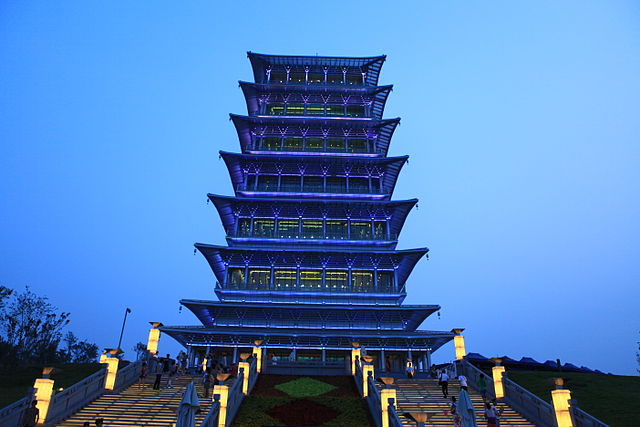 |
| Chang'an tower |
Chang’an (Ch’ang-an), literally “Perpetual Peace,” was the largest city in the world of its time, boasting a population of over a million by the eighth century c.e. and covering nearly 32½ sq. miles.
Chang’an actually refers to two cities. The first capital city, typically called “Han Chang’an” because of its construction during the Han dynasty, was built in 202 b.c.e. The famous emperor Han Wudi (Han Wu-ti) was known to have built gorgeous palaces there.
The so-called Early, or Western, Han dynasty ended in 9 c.e., and China was ruled by a Chinese nobleman, Wang Mang, whose reign lasted until 25 c.e., when rebels killed him and burned down Chang’an. The first city was abandoned and the capital of the Later, or Eastern, Han dynasty was relocated to the ancient capital city Luoyang (Loyang).
  |
The capital city remained in Luoyang until the beginning of the Sui dynasty in 580 c.e. Emperor Wendi, the first of the Sui emperors, commissioned the building of a new Chang’an in 582–583 c.e., a declaration he made from the old Han Chang’an.
The new Chang’an, much like its Han cousin, was built using a mix of geomancy, feng shui, matching topography to the hexagrams in the Yi Jing (I Ching)
The palace city, primary residence of the emperors, was located at the northernmost point of the city, a location that represented the North Star. Buddhist monasteries were built in the southwest section of the city, the most dangerous location according to geomancy, because it was believed they helped ward off bad luck.
Directly south of the palace compound was the imperial city, which housed the administrative offices of the government, and acted as a buffer between the son of heaven and the throngs of commoners occupying 88 percent of the space in Chang’an.
The residence wards included two large market areas with approximately 220 bazaars hosted in each. City officials strictly regulated these centers of trade.
In addition to a standardized system of weights and measures, all products underwent strict quality control. The cosmopolitan atmosphere of the marketplace attracted merchants, restaurant owners, and entertainers from Central Asian tribes and kingdoms such as the Uighurs and Sogdians.
The Tang dynasty and its capital at Chang’an began its decline during the An Lushan Rebellion of the mid-eighth century c.e. Over the next century a succession of attacks from Tibetans, rebels, mutineers, and warlords forced much of the business and its residents out of the city.
In 904, the last Tang emperor fled Chang’an for Luoyang, abandoning Chang’an to the weeds. It eventually decayed and collapsed, never again serving as the capital of China.
Choson
The kingdoms of ancient Choson developed in Korea from the Bronze Age when tribal groups started to dominate the land between the Liao River in southern Manchuria, and the Taedong River in northern Korea. The legendary founder of the dynasty was Tan’gun, hailed by Koreans in modern-day North Korea and South Korea as the founder of their nations.
Tan’gun is claimed as an ancestor for the kingdom of ancient Choson; the term ancient is used to differentiate it from the Yi dynasty, which ruled 1398–1910 c.e. and used the name Choson for Korea.
Ancient Choson from the fourth century b.c.e. was a series of tribal leagues that controlled the area from southern Manchuria to the Taedong River. It was powerful for more than 100 years at a time when China was preoccupied with what has become known as the Warring States period.
  |
A major innovation in ancient Choson that enabled the kings to maintain their independence was the use of iron. Prior to this most warriors in the region had used bronze. It is believed that the northern Chinese may have introduced iron when they were escaping the attacks of the Xiongnu (Hsiung-nu) or Huns.
One of these refugees was a former Chinese general called Wei Man (Wiman)who had served in the Chinese state of Yan (Yen). Wei Man was the descendant of important landowners in China during the Zhou (Chou) dynasty and had been welcomed in Choson, as he and his followers were experienced soldiers.
They were given land in the north of Choson where they offered to act as frontier guards. Wei Man was given a jade insignia denoting his importance as a Korean general. As more Chinese refugees came to live on his lands, his number of potential supporters increased, and his power grew.
Very soon Wei Man realized that the kingdom was weak, and he had many supporters among the Chinese refugees who had already arrived in Choson and were either living in his lands or elsewhere in the kingdom. He also managed to get support from some local tribes who felt that they had not been well treated by the kings of Choson. In 190 b.c.e.
Wei Man wrote to the rulers of Choson saying that the Chinese had invaded from several sides, and he had to guard the king. He and his supporters then moved quickly on the Choson capital of Pyongyang on the pretext of protecting the royal court against a Chinese invasion, which everybody had feared for several hundred years.
Wei Man then took over the capital and the existing king, Chun, and went further south, establishing himself as King Han, which has no connection to the dynasty in China of the same name.
Wei Man, who claimed descent from the Chinese sage Qizi (Chi Tzu), used his contacts in China to ensure that the Chinese recognized him as a king, and he reciprocated by acknowledging the emperors of China. He established cordial relations with the governor of Liaodong (Liao-tung), the neighboring Chinese province.
However, the tribute that Wei Man had promised to the Chinese emperor was never sent. Wei Man and his descendants had initially felt that they were well entrenched, but when the civil war ended in China and the Han dynasty came to power, they faced several Chinese invasions.
Diplomatic problems first arose when some Chinese rebels who had been involved in the Seven Princes’ Rising in 154 b.c.e. fled to Korea. The Chinese were also sending out emissaries to some of the tribes who lived in northern Choson.
The actual dispute leading to the invasion was over tribute. A Chinese delegate visited Yu Ku (or Ugo), the grandson of Wei Man, to ask why no tribute had been paid. Furthermore, Yu Ku had tried to stop tribes that he felt were part of his kingdom from acknowledging their overlordship by the Han.
This was particularly true of the tribes on lands in central and southern Korea. Yu Ku realized the situation was tricky, but having built up a relatively strong army, he prevaricated and eventually the envoy returned to China.
On the return trip the envoy allowed his charioteer to kill a Korean prince who had been sent to escort him to the border. This envoy claimed that he had killed a Korean general and was applauded by the Chinese court that decorated him with the title “Protector of the Eastern Tribes of Liao Tung.”
The Koreans protested, but a Chinese attack was inevitable and came in 109 b.c.e. when Emperor Wu of China sent his soldiers into Choson. Some 50,000 Chinese soldiers were dispatched by ship from Shandong (Shantung), with additional troops attacking by land.
The two armies were able to invade Korea, but their attacks were not coordinated, and they were unable to unite. As a result they were not able to defeat the Koreans in battle—the Koreans remained in their fortifications.
With the bitter winter imminent, the Chinese sent an envoy to Yu Ku who replied that he would accept the emperor of China as his overlord but would not send his son as a messenger in case he suffered the fate of the prince killed by the previous envoy. The only initial casualty of these negotiations was the Chinese envoy who was executed when he returned empty-handed.
In 189 b.c.e. the Chinese attacked the Koreans again, and this time they succeeded in seizing the kingdom and established four Chinese commanderies called Nangnang (Lolang in Chinese, Rakuro in Japanese), Chinbon, Imdun, and Hyont’o.
The latter three soon lapsed into Korean areas, with the Chinese only holding on to Nangnang. There a Confucian school was established, and several historical texts were written that described some of the early events in Korean history. The Confucian Classics remain an important part of Korean culture.
Over the next 400 years the Koguryo tribes of northern Korea started agitating against Chinese rule. As they rose in power, they amassed a large army and in 313 c.e. ejected the Chinese from Nangnang. In 342 c.e. the Koguryo king, Kogugwon, established his capital at Hwando just north of the Yalu River.
Facing threats from China, it was soon moved to Pyongyang. There the Koguryo kingdom imported many ideas from China including Buddhism, which is seen in many of the archaeological remains discovered in recent years.
2 Nisan 2012 Pazartesi
Confucian Classics
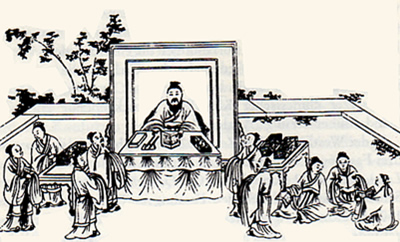 |
| Confucian Classics |
Since the beginning of the historic period the Chinese have held the traditions handed down from antiquity with deep awe and reverence. Works traditionally accepted as the heritage of ancient times long preceded Confucius (551–479 b.c.e.) but are nonetheless called the Confucian Classics.
The Five Confucian Classics are the most revered canonical works of the classics. They are
- Yi Jing (I Ching), or Book of Changes
- Shu Jing (Shu Ching), or Book of History or Documents
- Shi Jing (Shih Ching), or Book of Odes or Poetry
- Li Jing (Li Ching), or Li Ji (Li Chi), or Book of Rites
- Qunqiu (Ch’un-ch’iu), or Annals of Spring and Autumn
Confucius is the author of the Annals of Spring and Autumn. All others are collections of ancient documents that tradition says were edited and compiled by Confucius and his disciples.
  |
The Yi Jing, or Book of Changes, is a collection of short texts that give clues to interpreting the results of divination cast by priests by means of tortoise shells and milfoil stalks on orders from kings of the Shang dynasty (c. 1700–c. 1122 b.c.e.).
According to tradition, Confucius wrote a number of “wings” to these texts that elaborate on their interpretations and explain their significance. Modern historians attribute the “wings” to eras later than Confucius.
The Shu Jing, or Book of History, is a compilation of short documents. They are announcements, speeches, manifestos, and reports by ancient rulers and their ministers, beginning from the mythical ideal kings Yao, Shun, and Yu down to the early Zhou (Chou) dynasty (c. 1122–256 b.c.e.). Confucius, who also wrote introductions to the documents to explain their significance, supposedly edited them.
Modern historians think that while the Zhou documents are authentic, ones attributed to earlier eras were written much later. The Shi Jing, or Book of Poetry, is an anthology of 300 poems. Some were folk songs, while others were songs used by leaders for ceremonies. They date to the early Zhou period and were reputedly selected and edited by Confucius.
The Li Jing, or Book of Rites, is a varied collection that includes rules on the organization of the Zhou government, a code of conduct for lords and gentlemen, and rules for important events in life such as weddings, funerals, and sacrifices. The Duke of Zhou (Chou), a founding father of the Zhou dynasty, was supposedly the author of many of the documents in this classic. Again, Confucius is credited with selecting and editing the documents.
The Qunqiu, or Annals of Spring and Autumn, is a chronicle of the state of Lu between 722–481 b.c.e. and was compiled by Confucius, who came from that state. The book is important because through his choice of words Confucius gave his moral judgment of the persons and events that were chronicled.
When Emperor Wu of the Han dynasty made Confucianism China’s official ideology around 110 b.c.e., the Five Classics gained the status of canonical works. Great Han scholars worked on publishing an official version and officially endorsed interpretation. Students studied them and official examinations that recruited government officials were based on them, producing an educated elite in Chinese society for the next 2,000 years that were welded in the same tradition.
More than a thousand years after their canonization, during the Song (Sung) dynasty (960–1279 c.e.) there was a great movement to reexamine and reinterpret Confucianism. It was called Neo-Confucianism. A leader of this movement was Zhu Xi (Chu Hsi), who lived between 1130–1200. Zhu encouraged the study of four additional texts. The Four Books are
- Lunyu (Lun-yu), or Analects of Confucius. A collection of Confucius’s conversations and activities recorded and compiled by his students after his death. It consists of 20 chapters. They give clues to his character and ideals. For example: “Confucius said: ‘At fifteen, I set my heart on learning. At thirty, I was firmly established. At forty, I had no more doubts. At fifty, I knew the will of Heaven. At sixty, I was ready to listen to it. At seventy, I could follow my heart’s desire without transgressing what was right.’”
- Mengzi (Meng Tzu), or Book of Mencius. It is a compilation of the writings of Mencius (372–289 b.c.e.), who was honored as the second sage of the Confucian school, second only to the master.
- Daxue (Ta-hsueh), or Great Learning
- Zhongyong (Chung-yung), or Doctrine of the Mean
The Five Classics and Four Books are the most revered books in China. They are also essential in Japan and Korea, countries that adopted the fundamental ideals of Chinese civilization.















